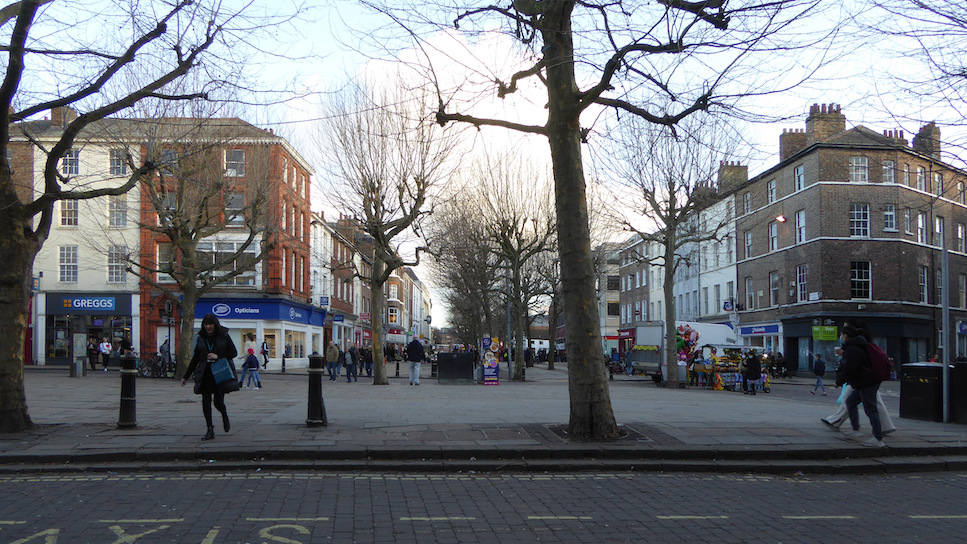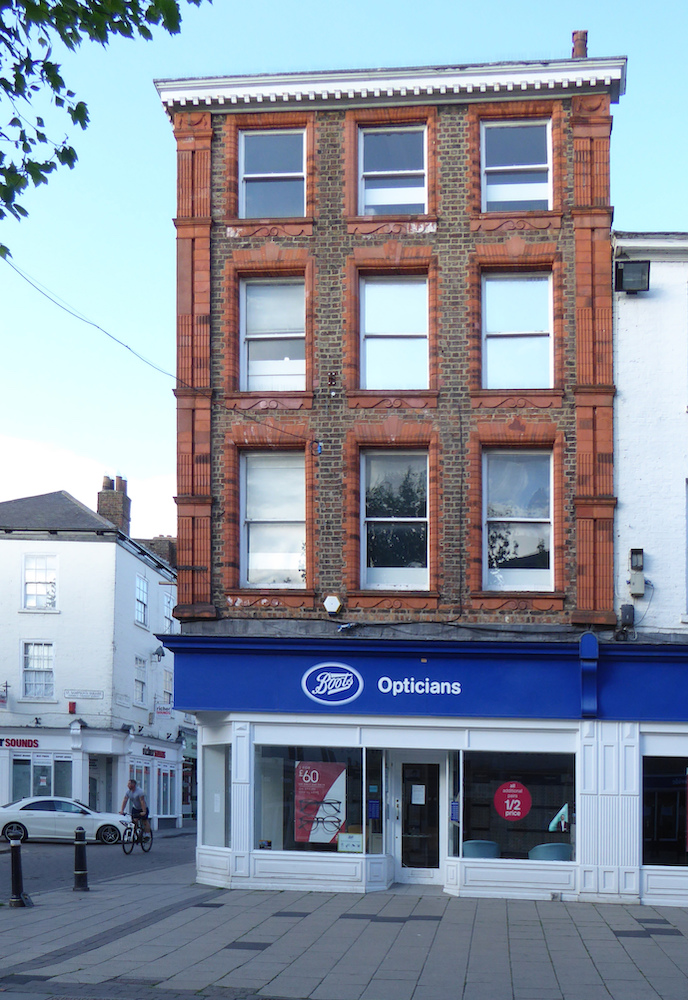Photographs by the author. Formatting by Jacqueline Banerjee. You may use these images without prior permission for any scholarly or educational purpose as long as you (1) credit the photographer and (2) link your document to this URL, or cite it in a print one. [Click on the images to enlarge them.]


Left: Both frontages, from opposite the corner. Right: The St Sampson's Square front.
22 Parliament Street (at the corner of Church Street, on St Sampson’s Square), York. This is a Grade II listed building, of "1836-39, with late C19 alteration and C20 shopfront" (listing text). The street itself was laid out 1835-50, its name derived from the Act of Parliament in 1834 which allowed earlier housing to be demolished, and two markets (then held in St Sampson’s Square and Pavement) to be combined, in the new broad street joining those two (see Pevsner and Neave 209). No. 22 fronts on Parliament Street (south-west) and Church Street (north-west).

Parliament Street from the north-west, across St Sampson's Square.
No. 22 is therefore a prominent corner site on the square, open and sunny. The building has four floors, but with an original doorway remaining only on one side — the less important Church Street side. The rest of the ground floor frontage is of twentieth-century date, as the listing text indicates.



Left to right. (a) The remaining original doorway on the Church Street side of St Sampson's Square. (b) The terracotta window frames above the door. (c) The Parliament Street front.
The building is in ordinary brown and purplish brick: "Flemish bond, right side rendered, with attached dressings of faience and orange moulded brick" (listing text). It has elaborated terracotta window frames and corner pilasters which are alternately reeded and plain and topped by a swagged device. Facing the Square on Church Street, the first floor has a large window, whose painted wooden framework is a late nineteenth-century insertion (according to the listing). The window may be indicative of the taste for plate glass.
The star of the building is the terracotta of the doorway facing the square. The door is solid wood, but there is a colourful glazed window above it to light the passage inside. The top of the doorframe is a triangular pediment and then a rectangle containing the window, flanked by scrolls; the jambs have more fluting. The ornament of star patterns in the pediment and the leafy stems in the upper part of the jambs (different on each side) are medieval in inspiration.



Closer views of the terracotta decoration on the doorway, including the sunflower motif which surely dates it to the later period.
History: Occupants of the Building
Advertisements in the Yorkshire Gazette in the autumn of 1844 (e.g. on 28 September, p.4) are for the business of “J. Waudby & Sons, Marble Importers and Manufacturers with extensive works in Hull.” They sold monuments, and the first floor showrooms displayed chimney pieces. By 1848 they had moved to premises at Coney Street, now advertising as “C. and J. Waudby, monumental sculptors and importers of foreign marbles,” and based at York Steam Marble Mills.
In 1855, no. 22½ Parliament Street was the shop or workshop of Thomas Wright, milliner and dressmaker (Ancestry). In Stevens' Directory of York of 1885, the building is listed both on Parliament Street and St Sampson’s Square, at which time, it was occupied by A. and J. Kleiser, watchmakers and jewellers (209). In Slater's 1855 directory, Andrew Kleiser had been in business at 38 Stonegate, and sold German clocks (855), so to move to Parliament Street was an expansion. For some decades it has been an opticians (now Boots Opticians).
Related Material
Bibliography
22, Parliament Street. Historic England. Web. 1 December 2020.
Directory of York, 1885, published by George Stevens. Leicester University Digital Collections. Web. 1 December 2020.
Pevsner, Nikolaus, and David Neave. Yorkshire: York and the East Riding. New Haven and London: Yale University Press, 2002.
Slater's Commercial Directory of Durham, Northumberland & Yorkshire, 1855. Leicester University Digital Collections. Web. 1 December 2020.
Created 1 December
Last modified (extra image added) 27 February 2022